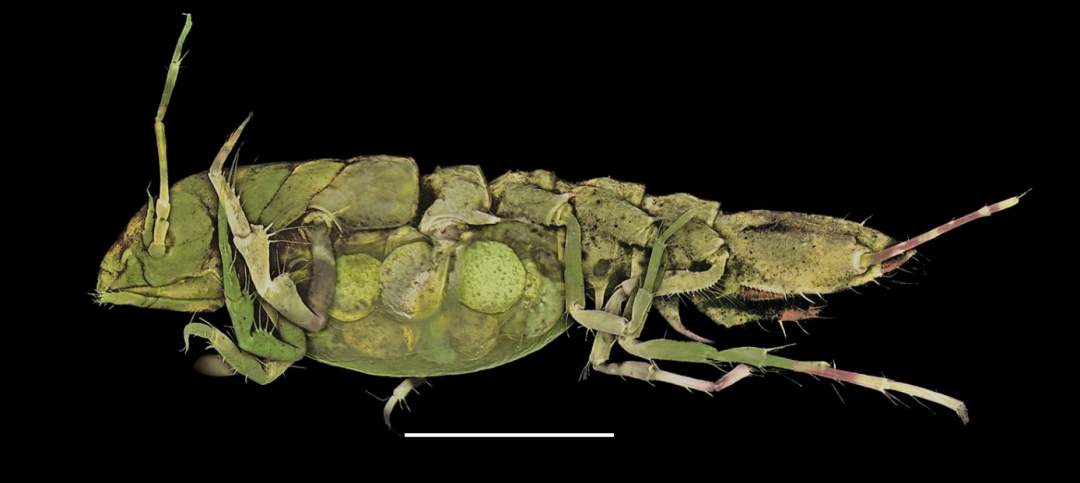Biogeography, systematics and evolution of Macrostylidae (Crustacea: Isopoda)
Did you know that isopod crustaceans, which also include woodlice, rolly pollies and sea slaters, are one of the most remarkable and striking groups of animals in the deep sea?
Isopods are highly diverse and very common in the deep but the deep-sea isopods are only distantly related to those ones that you may find in the woods or even in your backyard. Their last common ancestor likely crawled on Earth much more than 250 million years ago (Lins et al. 2012) — that is long before the dinosaurs even first appeared. One of the isopod groups that are common in deep-sea sediments is the family Macrostylidae that is rather intensively studied at the Senckenberg Institute Frankfurt.
Macrostylids are small (~ 1 mm – 1 cm), enigmatic isopod crustaceans about which only little is known. Feeding preferences, mating strategy, longevity, lifecycle and ecological interactions are all still largely unstudied. Currently, around 90 species are known and described worldwide but many more await description.
Macrostylidae (Crustacea: Isopoda) have a worldwide distribution in the cold water masses of the deep sea. In cold-water Boreal and Austral regions species have been also recorded in the upper bathyal and even at shelf depths, for instance in Norwegian Fjords or on the Antarctic continental shelf (Riehl and Kaiser 2012; Riehl and Brandt 2013). Macrostylids frequently occur in trenches and Macrostylis mariana Mezhov, 1993 from the deep Mariana Trench is one of the deepest ever recorded isopod species. Dr. Torben Riehl works on this group continuously since 2008 which makes him currently the world’s leading expert for Macrostylidae. He has described (or was involved in describing) multiple species of the genus Macrostylis G. O. Sars, 1864 as well as of the sister group of Macrostylidae, the family Urstylidae.
This long-term project includes, besides taxonomic work (descriptions, revisions), anatomical, phylogenetic, biogeographic, population-genetic and ethological aspects. Current studies on Macrostylidae comprise species descriptions from the Clarion-Clipperton Fracture Zone in the Pacific, from the Australian slope, and the deep Atlantic. At the first glance all of these look more or less alike. Despite, or probably even because they are so enigmatic, they are fascinating to study.
Why study Macrostylidae?
- Because of their commonness in deep-sea sediments, one of the most widely distributed habitat types in the world, many general ideas and theories about deep-sea biodiversity, ecology and evolution can be studied using Macrostylidae as a model taxon.
- Because of their locomotory abilities, habitat preferences, and brooding mode of reproduction, macrostylids can be considered relatively poor dispersers. This helps uncovering patterns of colonization, connectivity, and biogeography.
- Macrostylids are such a common and diverse element of abyssal communities that a vital role of this group in benthic communities and for abyssal ecosystem functioning can be assumed. In this regard, every new aspect discovered about their ecology, evolution or general natural history means getting closer to understanding this ecosystem.
- Macrostylidae occur in all oceans and almost across the entire available depth of the sea. This allows inference of depth-colonization patterns.
What do we know about Macrostylidae reproduction?
Caring for offspring requires energy, so offspring numbers have to be small.
Like all peracarid crustaceans, macrostylids are brooders. Ovigerous females (females bearing eggs) have a brood sack called marsupium on the ventral side of their body which is formed of leave-shaped and overlapping extensions of the female’s front legs. They carry the offspring beyond the moment of hatching. The larval development, which is typical for crustaceans, is shortened and happening while still within the eggs. After hatching, the post-embryonic macrostylids remain within the marsupium until they are fully functional and almost look like smaller copies of their mother. This life phase is called manca stage. The released babies still lack a seventh pair of pereopods and the seventh pereonite is underdeveloped or still absent. Over a few molting cycles these body parts successively develop. The advantage of brooding is that as the released offspring is larger and further developed than typically released crustacean larvae, the chances of survival and successful reproductions for each individual are increased. The disadvantage is that the number of offspring is limited to very few (maybe 5-25, depending on species) by the size of the marsupium. This mode of reproduction may be particularly advantageous in the abyss because it is generally food-limited. Especially the water column, the habitat of many free-swimming crustacean larvae, is oligotrophic (poor in nutrients) and the little food available accumulates at the seafloor, where the macrostylid mancae thrive.


